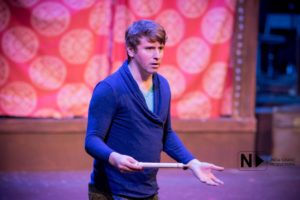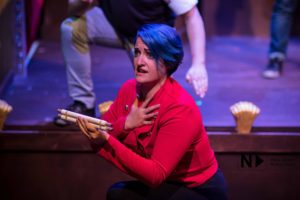
Shakespeare’s shows were performed amidst a lot of distraction. The Globe was fairly large, and it featured no amplification. There was plenty of noise filtering in from outside: shopping, barkers for other shows, bear baiting, you name it. Then there was the audience itself. Many of the higher-status individuals came just to be seen, and were happy to draw attention to themselves by showcasing their clothes and wittily commenting on the play as it progressed. The groundlings, those poor folks who could only afford to stand at the foot of the stage, were often drunk and rarely as schooled in refined restraint. It makes perfect sense to believe that when Hamlet asked, “To be or not to be,” plenty of audience members offered answer. When Viola asked, “How will this fadge?” (meaning, “How will this work out?”) the audience assured her, or maybe mocked her. When Lear bellowed, “Blow winds & crack your cheeks,” it’s possible and probable that the groundlings provided some of their own sound effects.
There was no fourth wall in Shakespeare’s time, no imaginary separation between the audience and actors. They didn’t pretend that the performance was really happening, nor were the audiences expected to sit awkwardly silent as this grand event rolled out before them. They paid to be entertained, and if interacting with the show was entertaining, that’s what they did.

In this way, Elizabethan shows were much more like modern sporting events. There was no intermission: when someone had to go to the bathroom, they got up and did it. If they had to stretch their legs or go find some food, they did it. If someone thought the villain was a jerk or that the romantic hero made a bad move, he or she was sure to let the actor know. Unrehearsed audiences are encouraged to do the exact same thing.
Our ideal venues are outdoors, with plenty of sunlight and plenty of access to the audience, such as the annual Bard in the Barn festival. Soliloquies are often performed out among the crowds, and in fact actors are encouraged to interact with the audience just as strongly as the audience is to interact with them. Because we are not attempting to create any illusory reality, because we are openly acknowledging that this is a performance, an Unrehearsed show can take place anywhere that can fit an audience and an acting space.
